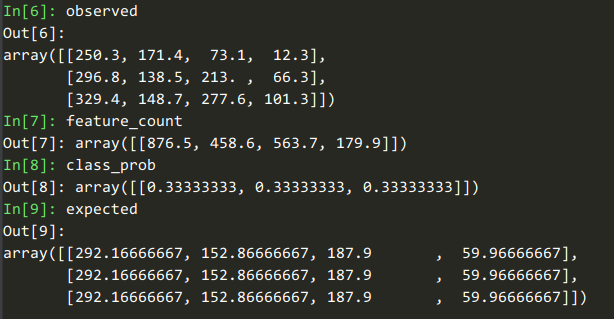卢总 - 特征选择方法汇总
特征选择三种方法:
-
Filter(过滤法)
-
Wrapper(包装法)
-
Embedded(嵌入法)
过滤法
卡方检验
直接看sklearn代码:
首先做OHE
Y = LabelBinarizer().fit_transform(y)
做完之后 Y Y Y的shape是 N × K N\times K N×K
observed = safe_sparse_dot(Y.T, X) # n_classes * n_features
K , N × N , M K,N\times N,M K,N×N,M
形成一个 K × M K\times M K×M的矩阵,表示每个类别对应的特征之和
observed
Out[6]:
array([[250.3, 171.4, 73.1, 12.3],
[296.8, 138.5, 213. , 66.3],
[329.4, 148.7, 277.6, 101.3]])

最后算卡方的代码:
def _chisquare(f_obs, f_exp):
"""Fast replacement for scipy.stats.chisquare.
Version from https://github.com/scipy/scipy/pull/2525 with additional
optimizations.
"""
f_obs = np.asarray(f_obs, dtype=np.float64)
k = len(f_obs)
# Reuse f_obs for chi-squared statistics
chisq = f_obs
chisq -= f_exp
chisq **= 2
with np.errstate(invalid="ignore"):
chisq /= f_exp
chisq = chisq.sum(axis=0)
return chisq, special.chdtrc(k - 1, chisq)
自变量对因变量的相关性

A
A
A是观测,
E
E
E是期望, 其shape都是
K
×
M
K\times M
K×M
自变量有 N N N种取值,因变量有 M M M种取值,考虑自变量等于 i i i且因变量等于 j j j的样本频数的观察值与期望的差距,构建统计量
![[linux]cp和mv对文件和链接影响的区别](https://pic002.cnblogs.com/images/2012/172931/2012013020295251.png)



